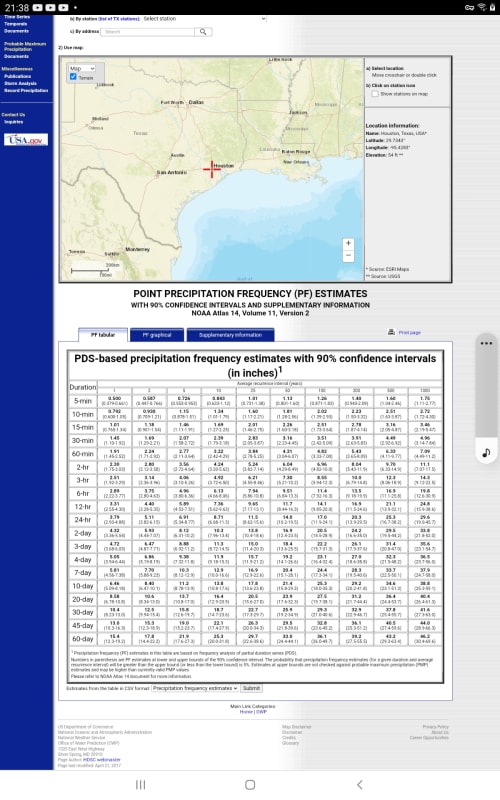Hi all,
I have a client that is specifying for a design that we use a value of '24 hr mean annual rainfall.'
This is a value being used in conjunction with a catastrophic event, and is intended to be less intensive than a typical 'extreme' type of rainfall.
However, any dataset (IDF curves, etc) I look at requires that we define a return period. The client's design criteria documentation does not expand on the meaning of '24 hr mean annual rainfall.'
Any idea what that could mean?
I have a client that is specifying for a design that we use a value of '24 hr mean annual rainfall.'
This is a value being used in conjunction with a catastrophic event, and is intended to be less intensive than a typical 'extreme' type of rainfall.
However, any dataset (IDF curves, etc) I look at requires that we define a return period. The client's design criteria documentation does not expand on the meaning of '24 hr mean annual rainfall.'
Any idea what that could mean?

